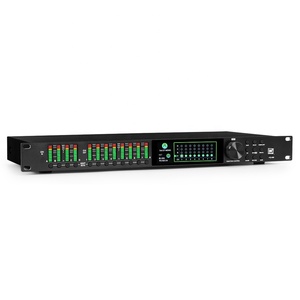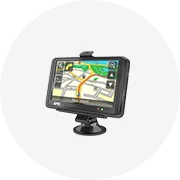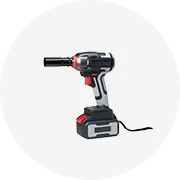Types of DSP Audio Processors
A DSP audio processor is a digital signal processor that modifies audio signals to enhance sound quality through advanced algorithms. These processors can dramatically transform audio performance in various applications.
Multichannel DSP Audio Processor
Designed to handle numerous audio channels simultaneously, from stereo (two channels) to complex surround sound systems (multiple channels). These processors utilize sophisticated algorithms for:
- Dynamic range control
- Surround sound processing
- Room acoustic adjustments
- Phase alignment
Best for: Home theaters, professional audio systems, broadcasting studios, and concert venues where consistent sound quality across all channels is critical.
Car DSP Audio Processor
Specialized for automotive audio systems, these processors compensate for the unique acoustic challenges of vehicle interiors. Key features include:
- Custom equalization profiles
- Time alignment for speaker distances
- Sound staging optimization
- Noise reduction for road and wind noise
- Digital crossovers for efficient power distribution
Best for: Audiophiles seeking premium sound quality in cars, competition car audio systems, and custom car audio installations.
Portable DSP Audio Processor
Compact and lightweight designs offering professional-grade audio processing on the go. These units provide:
- Equalization and compression
- Effects processing
- Multi-device connectivity
- Headphone optimization
- Battery-powered operation
Best for: Mobile musicians, field recording professionals, audiophiles, and sound engineers who require high-quality sound tailoring in portable settings.
Specifications of DSP Audio Processors
Understanding the technical specifications of DSP audio processors is crucial for selecting the right unit for your specific needs. Here's a breakdown of the key specifications to consider:
Input Channels
These are dedicated sections where audio signals enter the processor from various sources. Configurations range from basic 2-channel stereo inputs to professional 16+ channel arrays. Input options can include:
- Analog inputs (RCA, XLR, TRS)
- Digital inputs (Optical, Coaxial, AES/EBU)
- Network inputs (Dante, AVB)
Output Channels
These send processed signals to speakers, amplifiers, or other devices. Output configurations include:
- 2-channel stereo
- 5.1/7.1 surround sound
- 8-16 channel professional setups
- Both analog and digital options
Processing Algorithms
These are the digital tools that modify audio signals. Common processing includes:
- Parametric & graphic equalization
- Dynamic processing (compression, limiting)
- Time alignment and phase correction
- Crossover filtering
- Reverb and spatial enhancement
Sample Rate & Bit Depth
These determine audio resolution and quality:
- Sample rates: 44.1kHz, 48kHz, 96kHz, 192kHz
- Bit depth: 16-bit, 24-bit, 32-bit floating point
- Higher values offer better audio detail but require more processing power
Latency
The delay between input and output signals:
- Ultra-low latency: <1ms (live performance)
- Low latency: 1-10ms (most applications)
- Standard: >10ms (non-critical timing applications)
Control Interface
How users interact with and adjust processor settings:
- Computer GUI software
- Web-based interface
- Mobile app control
- Hardware controls (knobs, buttons, touchscreens)
- Remote control options
Maintenance of DSP Audio Processors
Regular maintenance ensures optimal performance and extends the lifespan of your DSP audio processor. Follow these essential practices:
Physical Inspection
Check your DSP audio processor regularly for any physical damage, loose connections, or signs of wear. Inspect cables, connectors, and mounting hardware, particularly in environments with vibration or movement.
Frequency: Monthly, or after any system transportation
Cleaning Procedures
Keep your audio processor free of dust and debris which can cause overheating and performance issues:
- Power off and disconnect before cleaning
- Use compressed air to remove dust from vents
- Clean external surfaces with a microfiber cloth
- Avoid liquid cleaners near electronic components
Frequency: Every 3-6 months, more often in dusty environments
Firmware Updates
Manufacturers regularly release firmware updates that can improve performance, add features, and fix bugs. Check the manufacturer's website regularly for updates, and follow their specific instructions for installation.
Best Practice: Create a backup of your settings before updating firmware
Frequency: Every 3-6 months, or when notified by manufacturer
Audio Level Calibration
Periodically check and adjust the audio levels to prevent distortion and ensure optimal signal-to-noise ratio. Use proper test equipment or signals when available.
Frequency: Every 6-12 months, or when changing system components
Cable and Connector Maintenance
Inspect and replace worn-out cables and connectors to prevent signal degradation:
- Check for fraying, kinks, or exposed wires
- Clean connector contacts with appropriate electronic contact cleaner
- Ensure secure connections and proper strain relief
Frequency: Every 6 months, immediately if intermittent issues occur
How to Choose a DSP Audio Processor
Selecting the right DSP audio processor for your business or personal needs requires careful consideration of several critical factors. Here's a comprehensive guide to help you make an informed decision:
Application Requirements
Different audio environments have distinct processing needs:
- Live Sound: Requires low latency, intuitive interface, and reliable performance
- Fixed Installations: Emphasizes integration flexibility, remote control, and preset management
- Studio Production: Prioritizes audio quality, precise controls, and creative processing options
- Automotive: Focuses on specific car acoustic challenges, compact size, and mobile integration
Audio Performance Metrics
Evaluate these technical specifications for quality assessment:
- Signal-to-Noise Ratio (SNR): Higher is better, look for >110dB
- Total Harmonic Distortion (THD): Lower is better, aim for <0.005%
- Dynamic Range: Higher provides more headroom, seek >114dB
- Processing Quality: Review algorithm implementations and sound character
Configuration and Control Options
Consider how you'll interact with and manage the processor:
- Control Methods: Software GUI, mobile apps, hardware controls, network interfaces
- Connectivity: USB, Ethernet, Wi-Fi, Bluetooth for programming and control
- Multi-user Access: Password protection and permission levels for team environments
- Preset Management: Number of available presets and scene recall capabilities
Scalability and System Integration
Evaluate how the processor fits into your current and future setup:
- Expandability: Additional I/O options, networking capabilities
- Integration Protocols: Support for industry standards (Dante, AES67, etc.)
- Third-party Control: Compatibility with Crestron, AMX, or other control systems
- Future-proofing: Upgradable firmware and expandable architecture
Reliability and Support
Consider the long-term ownership experience:
- Build Quality: Component quality and manufacturing standards
- Warranty Terms: Length and coverage details
- Technical Support: Availability, knowledge, and responsiveness
- User Community: Active forums and user base for troubleshooting help
Budget Considerations
Balance cost with value when making your selection:
- Total Cost of Ownership: Initial price plus potential accessories, upgrades
- Feature-to-Price Ratio: Ensure you're not paying for unneeded capabilities
- ROI Analysis: For business use, consider potential revenue impact
- Alternative Options: Compare multiple models across different price points
DIY Installation and Replacement of DSP Audio Processors
Installing or replacing a DSP audio processor can be a rewarding DIY project for those with some technical knowledge. Follow these steps for a successful installation:
Choosing the Right DSP Audio Processor
Before purchasing, ensure the processor meets your specific requirements:
- Verify input/output configurations match your system needs
- Confirm physical dimensions fit your installation space
- Check power requirements and available connections
- Review software compatibility with your computer/mobile devices
- Ensure the processor supports your desired processing features
Preparation and Planning
Proper preparation ensures a smooth installation process:
- Document your existing system connections (photos or diagrams)
- Gather necessary tools: screwdrivers, wire cutters/strippers, multimeter
- Acquire appropriate cables and connectors for your setup
- Download and install management software before physical installation
- Create a clean, well-lit workspace with adequate power access
Connecting the DSP Audio Processor
Follow these steps for proper physical installation:
- Power off all equipment before making any connections
- Mount the processor in a well-ventilated location
- Connect input sources (head unit, mixer, etc.) to input channels
- Connect output channels to amplifiers or powered speakers
- Use high-quality shielded cables to minimize interference
- Secure all connections and provide strain relief for cables
Configuring the DSP Audio Processor
Set up your processor for optimal performance:
- Connect to the processor via USB, Ethernet, or Wi-Fi as applicable
- Update firmware to the latest version if needed
- Configure input routing and channel assignments
- Set crossover points appropriate for your speakers
- Adjust time alignment based on speaker distances
- Apply equalization to compensate for room acoustics or speaker response
- Set appropriate limiter thresholds to protect speakers
- Save multiple presets for different listening scenarios
Testing and Fine-Tuning
Verify your installation and optimize performance:
- Start at low volume and check for any unusual noise or distortion
- Verify all channels are working and correctly assigned
- Listen for phase issues or time alignment problems
- Use reference tracks you're familiar with to evaluate sound quality
- Make incremental adjustments to EQ and other parameters
- Consider using measurement tools like a Real-Time Analyzer (RTA)
- Save your configurations after achieving desired sound
Frequently Asked Questions
Yes, DIY installation is definitely possible for those with basic technical knowledge and understanding of audio systems. Many manufacturers provide detailed installation guides, and numerous online resources offer step-by-step instructions. The process typically involves:
- Planning your audio signal path
- Making proper electrical connections
- Configuring the processor via software
- Fine-tuning settings for optimal performance
However, for complex systems or if you're uncertain about any aspects of the installation, professional installation is recommended to ensure optimal performance and prevent potential issues with your audio equipment.
Yes, a properly configured DSP audio processor can make a dramatic difference in sound quality. The improvements are most noticeable in:
- Clarity and definition - By eliminating frequency masking and enhancing detail
- Sound staging and imaging - Through precise time alignment and phase correction
- Bass response - By optimizing crossover points and applying targeted equalization
- Overall balance - Through system-wide tonal adjustments that compensate for speaker and room deficiencies
- Dynamic range - By controlling compression and limiting to prevent distortion while maintaining impact
The difference is particularly noticeable in challenging acoustic environments like vehicles or rooms with poor acoustics, where DSP can compensate for environmental factors that would otherwise degrade sound quality.
DSP audio processors are highly versatile and can be effectively implemented in virtually any audio system, including:
- Home audio systems - From basic stereo to complex multi-room setups
- Home theaters - For enhanced surround sound processing and room correction
- Desktop audio - To improve computer and gaming audio experiences
- Automotive sound systems - To overcome the challenging acoustics of vehicle interiors
- Professional venues - Studios, concert halls, houses of worship, etc.
Many consumer-oriented DSP processors offer user-friendly interfaces specifically designed for home users without professional audio expertise. Some A/V receivers and soundbars even include built-in DSP functionality with simplified controls, making this technology accessible to casual listeners while still delivering significant sonic benefits.
When selecting a DSP audio processor, consider these essential features based on your specific application needs:
- Input/Output Configuration: Ensure the processor has enough channels and the right connection types (RCA, XLR, optical, etc.) for your system
- Processing Capabilities: Look for parametric EQ bands, crossover options, time alignment, and any specific effects you need
- User Interface: Consider how you'll control the processor—software GUI, mobile app, or physical controls—and choose what works best for your technical comfort level
- Preset Management: Multiple savable configurations for different listening scenarios or users
- Audio Specifications: Higher bit depth/sample rate for better audio quality
- Integration Options: Compatibility with other equipment and control systems
- Expandability: Some processors offer expansion cards or network capabilities for future growth
- Support and Community: Available documentation, tutorials, and user forums can be invaluable resources
Remember that the most expensive processor isn't necessarily the best for your needs—focus on the features that directly benefit your specific application and audio goals.
DSP processor settings should be recalibrated in the following circumstances:
- After any system component changes (speakers, amplifiers, source units)
- When repositioning speakers or changing room layout
- Following significant environmental changes (seasonal temperature variations in vehicles)
- Every 12-18 months as preventative maintenance
- When you notice degradation in sound quality
For critical professional applications, quarterly recalibration might be appropriate, while home systems can generally maintain settings longer if no changes occur to the system or environment.




































































































































































































































































 浙公网安备 33010002000092号
浙公网安备 33010002000092号 浙B2-20120091-4
浙B2-20120091-4